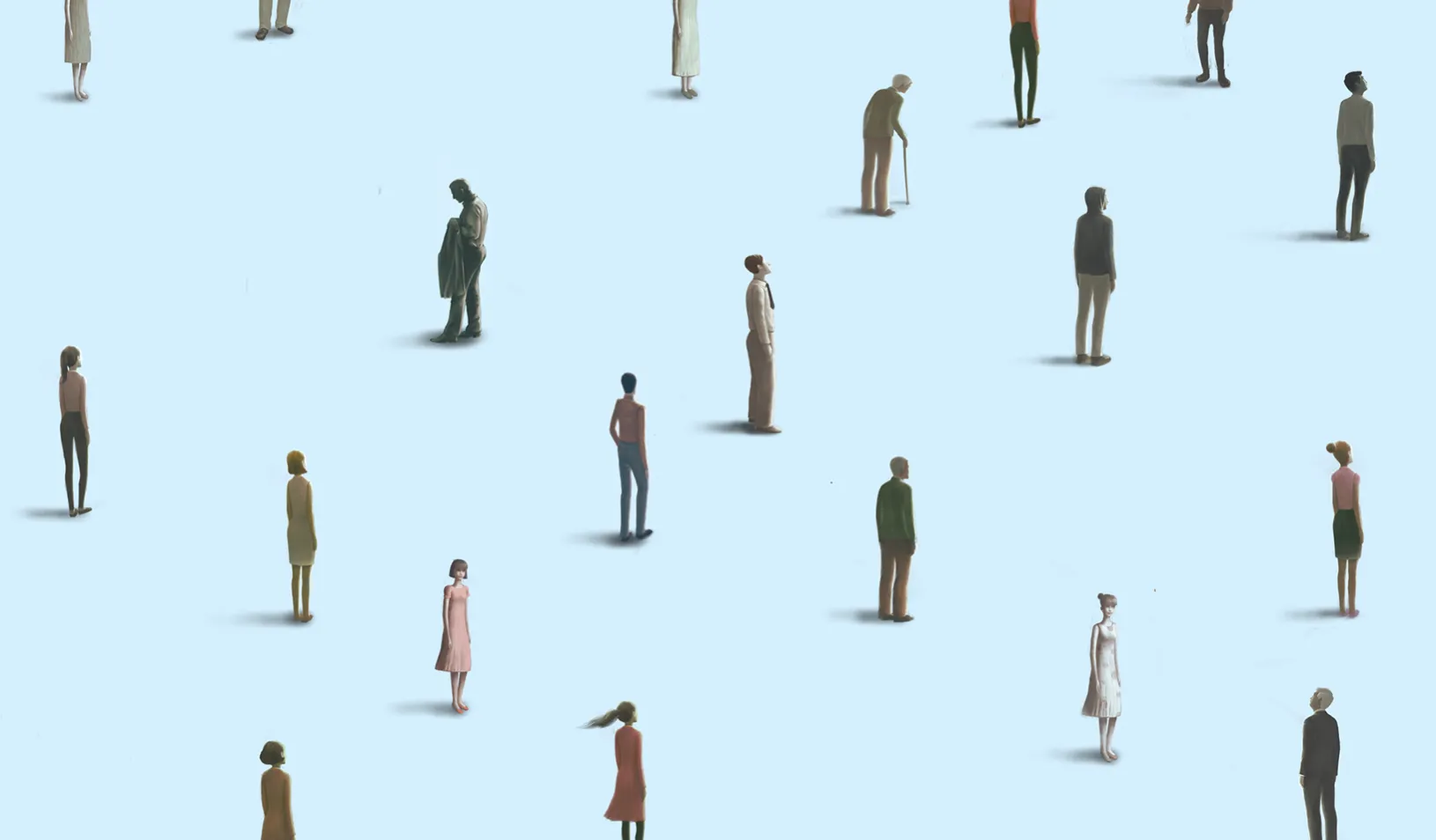Unlocking the “Iron Cage” of Corporate Conformity
A scholar of organizations looks at how the pressure to homogenize affects industries — including his own.
April 11, 2024

Organizations are pushed to become more and more alike over time. | iStock/Jorm Sangsorn
As a newly hired assistant professor of organizational behavior and sociology at the Yale School of Management, Walter (Woody) Powell observed a strange phenomenon through his office window. It was 1979. Bold colors and patterns were in style and his students came to campus dressed in jeans and vivid colors.
But then recruiters would arrive from consulting firms like Bain, McKinsey, and Boston Consulting Group. Powell would see colorfully dressed students dash into the bathrooms before their job interviews, emerging in the muted attire of a businessperson: white shirts, navy blue jackets, pencil skirts.
“I was stunned by this transformation,” he says. When it came time to join an organization, these “free spirits” believed they had to put on the right uniform to be taken seriously.
Powell and another young faculty member, Paul DiMaggio, were interested in understanding what caused this kind of homogenization. From their research and discussions with colleagues across a range of disciplines, a thesis emerged: As a field starts to emerge and take shape, pressures inside and outside organizations push them to become more and more alike. In 1983, they published their argument in an article in the American Sociological Review titled “The Iron Cage Revisited: Institutional Isomorphism and Collective Rationality in Organizational Fields.” What had started with a few curious observations became the most cited paper in the journal’s history and a seminal moment in the fields of organizational development and sociology.
Now a professor of organizational behavior (by courtesy) at Stanford Graduate School of Business who is also affiliated with Stanford’s schools of education, engineering, and humanities and sciences, Powell reflects on the 40-year legacy of that paper. In a new article, he and DiMaggio, now at New York University, revisit the origins of their “iron cage” model and its continued relevance.
The More Things Change…
By the time they teamed up, Powell and DiMaggio had already studied industries where once diverse and vibrant organizations had cohered and flattened. DiMaggio had looked at cultural organizations in New England. In the mid-19th century, local performance venues offered both popular minstrel shows and more elite fare, such as readings from Shakespeare. Yet these venues standardized their programs over time, dividing elite and popular culture into distinct avenues. Powell noted a similar shift in the publishing industry, where generalist family-owned firms started to differentiate into trade, scholarly, and popular houses as they were acquired by large corporations. He and DiMaggio were curious about which environmental and cultural factors made such homogenization so common.
It was a novel approach during an otherwise quiet moment in organizational sociology, when scholars endlessly focused on the best way to organize a company and how many people should report to a single boss.DiMaggio and Powell brought in influences from the study of culture and other disciplines. The title came from the German scholar and polymath Max Weber, who coined the term “iron cage” to describe the limitations of rationalism and bureaucracy; they combined Weber’s idea with their real-world observations.
Revisiting their original paper, DiMaggio and Powell recall how their research on nonprofits showed the pressures that drive organizations to morph into similar structures, a phenomenon they termed “isomorphism.” They describe watching consultants work with New York’s WNET, the country’s largest public television station, as it struggled with massive budget cuts. The station relied on government funding, which had been slashed under the Reagan Administration. This put it under what Powell and DiMaggio call coercive pressure — in this case, pressure to conform so it wouldn’t upset its critics in Washington.
WNET was also subject to what DiMaggio and Powell call mimetic and normative isomorphism. As industries start to professionalize and as their employees switch companies, their structures begin to look the same. This is particularly true during times of uncertainty, when organizations start to copy their competitors.
DiMaggio and Powell call out consulting firms, which exercise their own kind of isomorphic pressures as they dole out advice. DiMaggio and Powell describe these firms like Johnny Appleseeds, spreading “a few organizational models throughout the land.” At WNET, which had many small, autonomous departments, the consultants suggested a more top-down reorganization to “make the sleepy nonprofit seem modern.” Suddenly, the independent station looked just like any other broadcaster.
Collaboration vs. Isolation
At the time Powell and DiMaggio wrote their original paper, Yale’s management school was building an unusual reputation, focused on sending students into government and nonprofits in addition to private industry. (One joke was that while Harvard MBAs dreamed of driving Porsches, Yale MBAs dreamed of driving Volvos.) Powell was thrilled by the school’s open, collaborative atmosphere and its emphasis on cross-disciplinary scholarship. “I was like a kid in a candy store,” he says. In the social sciences cafeteria, senior and junior faculty from management, economics, political science, and sociology would mix and share lunch tables.
The iron cage paper has since grown to take on a life of its own, Powell says. It reinvigorated the field of organizational behavior, spawning interest in how networks affect companies and how the movement of personnel and hiring practices changes an industry. Now, Powell is interested in the work of younger Stanford GSB faculty like Amir Goldberg, who uses computational analysis to examine the language in corporate emails to predict whether a new hire will fit in.
Ironically, though, Powell and DiMaggio now lament that the structure of academia has itself calcified. “Many scholarly communities are now like suburbs, nice quiet villages that have their own language, their own ways of doing work,” they write in “The Iron Cage Redux.” Young scholars feel such pressure to publish — and are so worried about securing tenure — that their research has grown myopic. “The work is kind of narrow and speaks to a limited audience,” Powell says.
He and DiMaggio also caution against isolation and division among disciplines. “[W]e need boulevards and avenues that run through the suburbs and around the parks,” they write. Talk to your colleagues, seek out influences beyond your department, they urge. You don’t have to wear the same uniform as everyone else.
For media inquiries, visit the Newsroom.
Explore More

Masterclass on Stanford’s Most Popular Leadership Course




